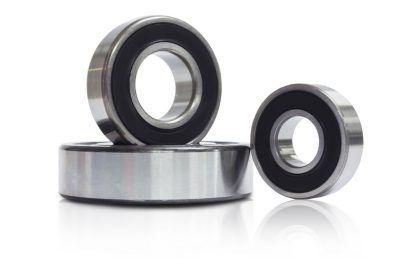How Are Titanium Dioxide Pigments Optimized For The Paint Industry?
TiO2 (or Titanium dioxide) pigments are used to give opacity (or hiding power) and whiteness to plastics, inks, and coatings. This white pigment option is actually twofold:
- Because it does not absorb visible light, it’s white.
- It has a high reflective index.
The paint industry, in particular, makes good use of titanium dioxide pigments. For their purposes, methods of optimizing TiO2 have been discovered.
Optimizing Titanium Dioxide Pigments
Because they can be expensive, titanium dioxide pigments are optimized to help reduce costs somewhat. There are two methods of titanium dioxide pigment optimization used in the paint industry today. Below, we have detailed, in a simplified manner, optimization methods.
Particle Distribution
A scattering efficiency is effective when primary particles are:
- Distributed over the complete system
- Stabilized against flocculation
- Separate from each other
As much distance as possible should exist between individual pigment particles. It is said that, within the system, the pigment particles must be spaced. Spacing can be obtained when filler particles of a comparable size are combined with titanium dioxide particles. The filler particles prevent interference of the titanium dioxide particles rather than scattering light.
The grouping together of titanium dioxide particles (an undesirable aspect referred to as crowding) happens when big filler particles (in comparison to the titanium dioxide particles) are combined with the TiO2 particles.
By combining the pigment with the right size filler particles and the right dosage of them, industries can obtain optimum titanium dioxide pigment hiding power and whiteness.
Dispersion Process Optimization
As efficiently as possible, every titanium dioxide particle should be used. When all particles are distributed over the system and separated from each other, the most efficient light scattering occurs.
The dispersion process can, however, be challenging because there is a strong attraction between solid particles. This offers two implications…
Flocculation: To prevent flocculation, the particles must be stabilized. Flocculation is caused by the attractive forces between particles spontaneously gluing the particles together in a liquid. To prevent this from happening, a dispersant or stabilizer is used for adsorbing. Immediately after separation of the particles, this is done at the surface of the solid particles. An assurance that the particles repel – and remain separated – is offered by the dispersant. For this, two mechanisms can be used:
- Steric stabilization – In the liquid continuous phase surrounding the particles, this is a result of polymeric tails dissolving (part of the dispersant molecules).
- Electrostatic stabilization – When all particles have an electrostatic charge that is identical, this is the result.
Labor intensive: During the disbursement process, to separate the particles from each other, a lot of work has to be done. High-energy dispersion equipment like the following is used for separation:
- Pearl mill
- Dissolver or disk disperser
To separate primary pigment articles from each other, however, the shear forces in a dissolver set up aren’t strong enough. Using a pearl mill, more complete separation is obtained.
Optimal Usage of Titanium Dioxide Through A&A Coatings
Remember, titanium dioxide can be costly, so reducing costs through optimization is always preferable. A seasoned professional experienced in protective coatings is your best option. The practical formulation strategies described above will help your business work with TiO2 and achieve the most favorable cost/performance ratio possible.
At A&A Coatings, we offer the best applications and materials suited for any industry on a daily basis. Our technicians constantly strive for optimal performance in the coatings they apply. Our research and development division is already looking for other methods of complete optimization for any given material at any given time.
Contact us today if you like to find out more.



